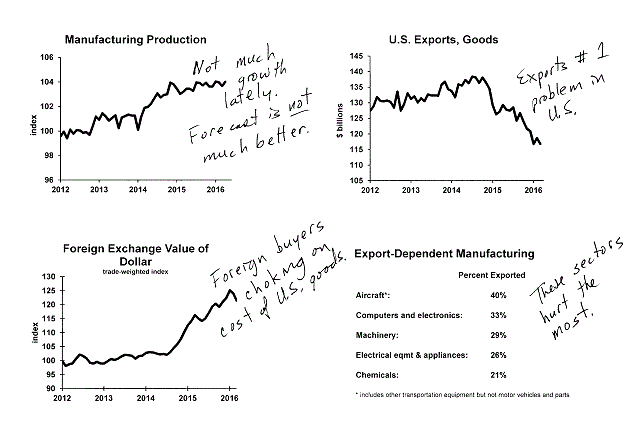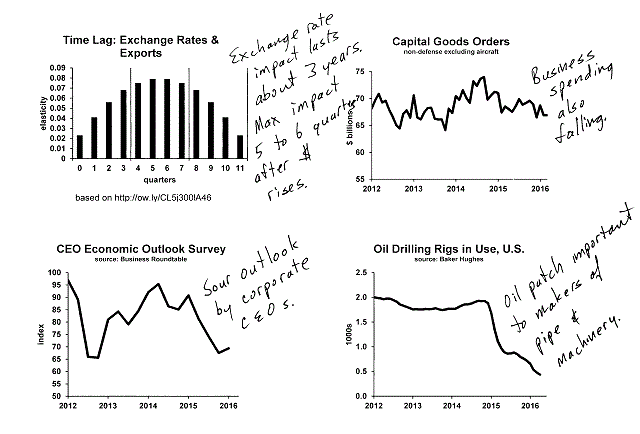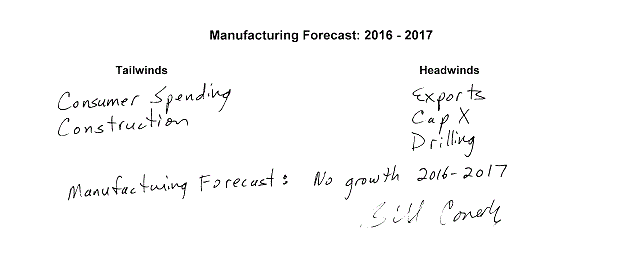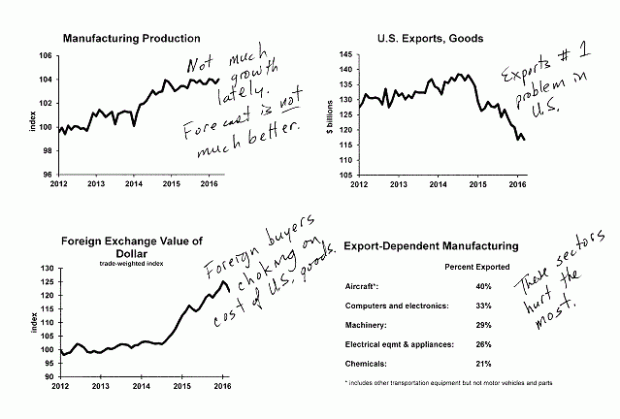Manufacturing is weak in the United States, with a so-so outlook for the next few years. Some sectors will certainly grow, and the best-run companies in lagging sectors can usually do well. The overall picture, though, is not pretty. Causes of the weakness are the strong dollar, weak capital spending, and oil drilling’s decline.



Export markets have fallen precipitously in the last year and half as the dollar has risen on foreign exchange markets. The Greenback is up 16 percent over the past two years, and that’s with three months of softening. With the dollar more expensive, foreign buyers are choking on U.S. price tags.
The manufacturing sectors most dependent on exports are:
* includes other transportation equipment but not motor vehicles and parts
The impact of foreign exchange rates takes time and then persists for quite a while. As a rough rule of thumb, think of 6 quarters between exchange rate movements and the biggest impact on exports, with continuing effects through the third year after the initial change.
The aircraft industry is at the extreme tail of the time lag. Jetliners are very long lead time purchases. Based on Boeing’s (BA) report of orders and deliveries, delivery on a new order could take five to nine years. Obviously last year’s dollar run-up won’t immediately impact production.
At the opposite extreme, commodities often sell on short lead times. Raw steel production dropped pretty much at the same time that the dollar began to rise. In between, products such as computers and machinery react in months or a year or two. Companies have their preferred vendors so changing suppliers is not immediate, but given time, purchasing managers switch to lower cost countries of origin.
We have another year or more of impact from the rise that already has occurred even if the dollar falls through the rest of this year, because of those time lags.















No Comments